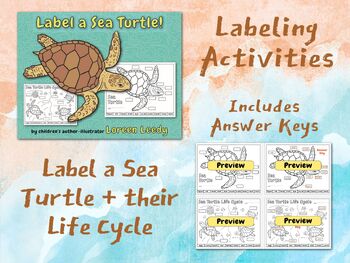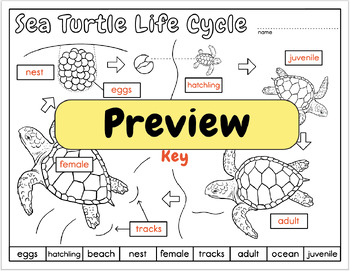Label a Sea Turtle! {Body Parts Diagram}
- PDF
What educators are saying
Also included in
- Your students will read an award-winning nonfiction picture book, review sea turtle facts, complete a KWL chart, label two sea turtle diagrams, and more with this discounted bundle of life cycle activities. The realistic illustrations in Tracks in the Sand show sea turtles in the process of diggingPrice $7.99Original Price $9.49Save $1.50
Description
If you need a sea turtle diagram, a body parts labeling activity, or a quick marine animal printable, check out this popular option. Includes a life cycle labeling printable, too! Add to an Ocean unit or a nonfiction research project about the natural history of turtles. The realistic artwork shows students what sea turtles actually look like. The particular species shown is the loggerhead.
Students can write in the labels OR cut and glue them into place. Answer Keys are included. Check the thumbnails or download the Preview for a closer look. All artwork is original.
Supports the CCSS.ELA-Literacy.RI.2.7:
Explain how specific images (e.g., a diagram showing how a machine works) contribute to and clarify a text.
View my award-winning picture book about the sea turtle life cycle, Tracks in the Sand.
Click here for my REAL Animal nonfiction activities.
Vocabulary on body parts diagram: head, eye, nose, beak, neck, flipper, shell, scute, tail, scale
On life cycle diagram: eggs, hatchling, beach, nest, female, tracks, adult, ocean, juvenile
Keywords: sea turtles, STEM, marine animals, science, ocean, natural history, predators, anatomy, biology
Thanks so much for visiting my shop!
Loreen Leedy
Children's author-illustrator of Step by Step
See my 40+ picture books at www.LoreenLeedy.com






